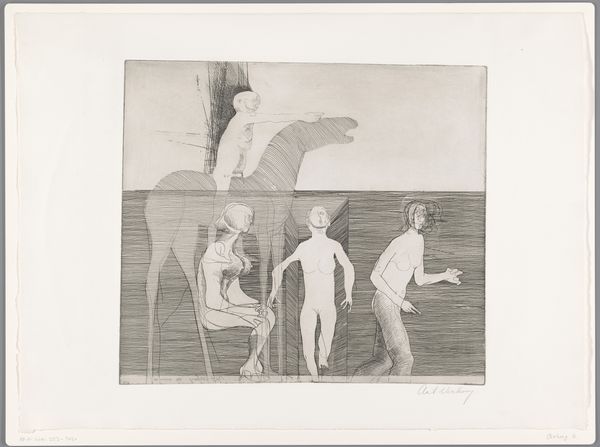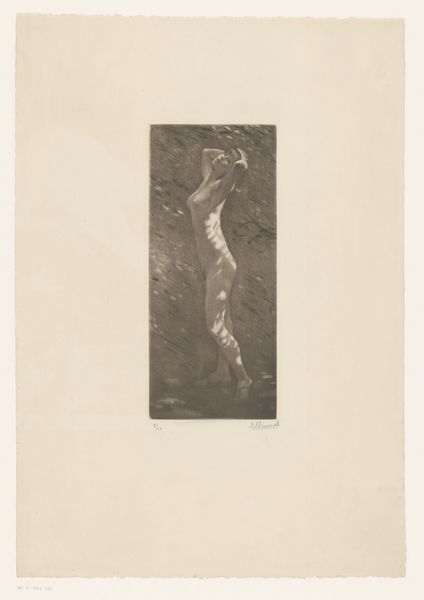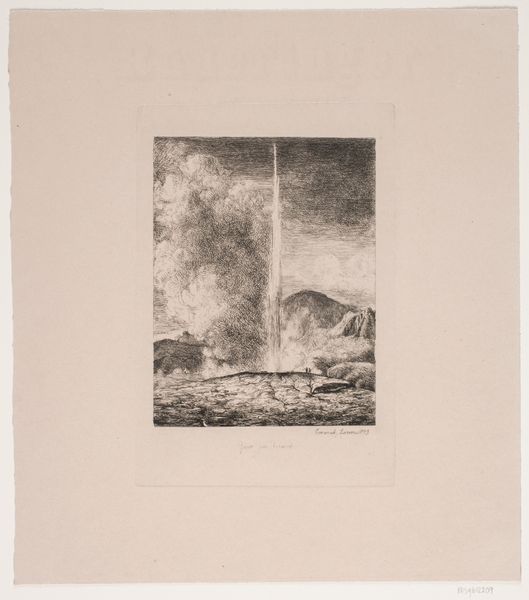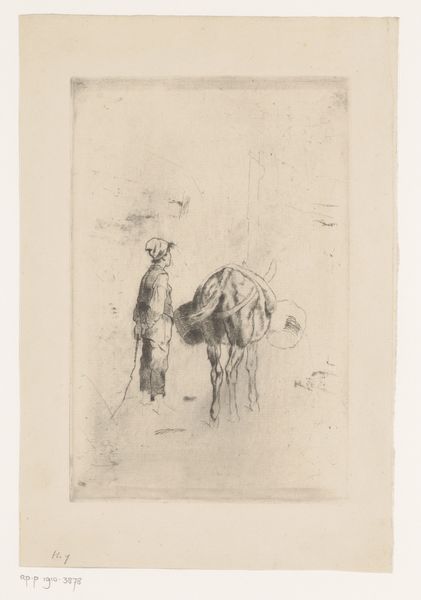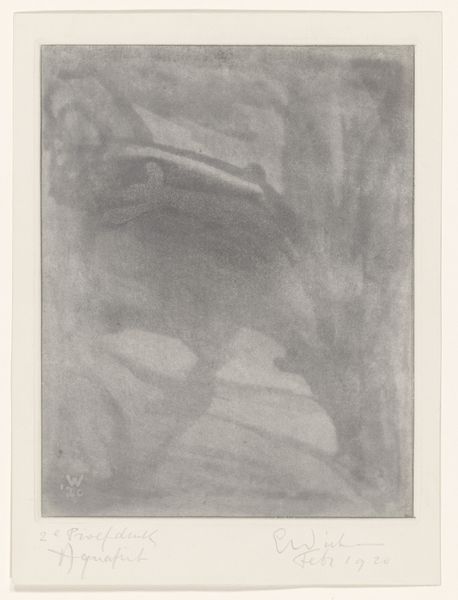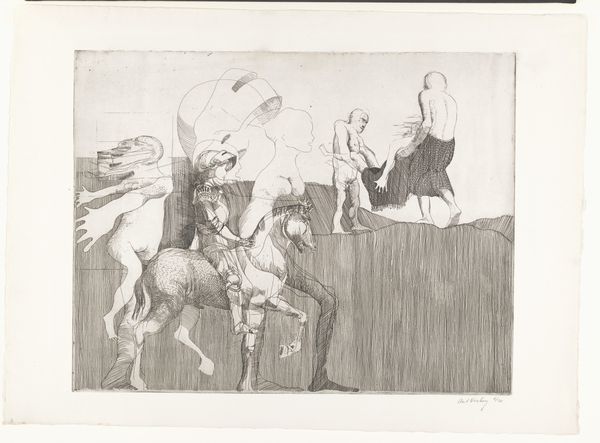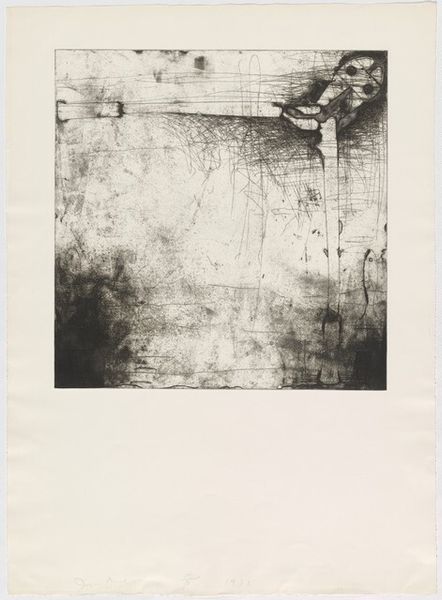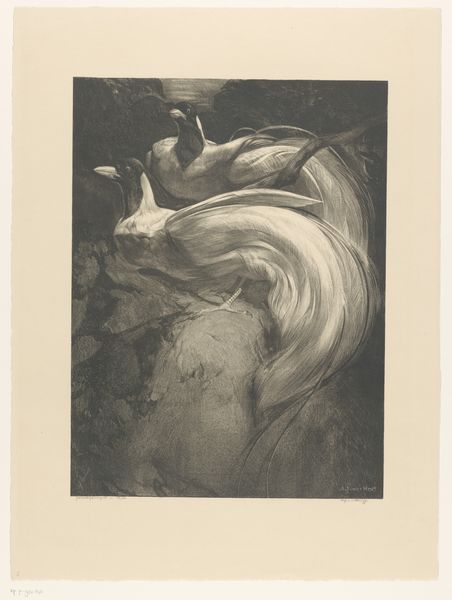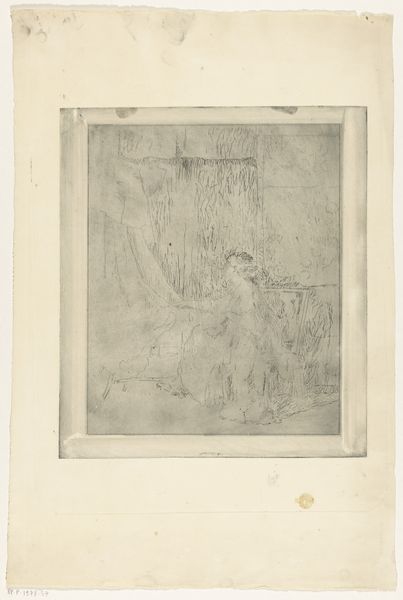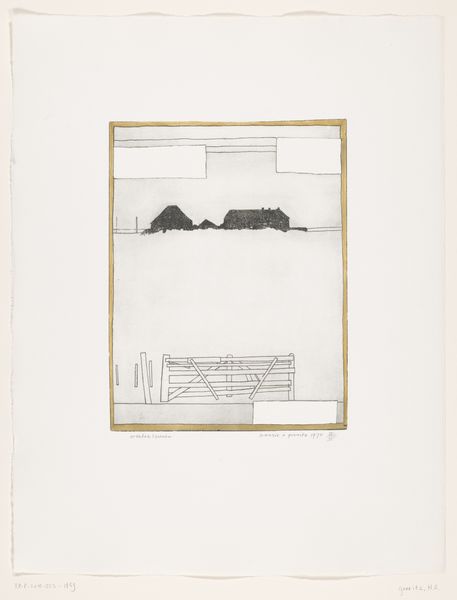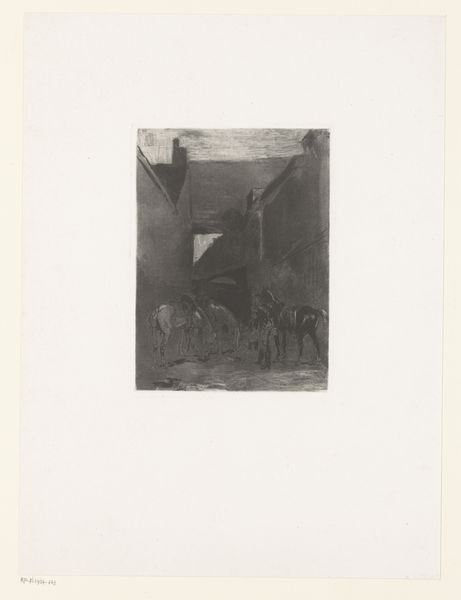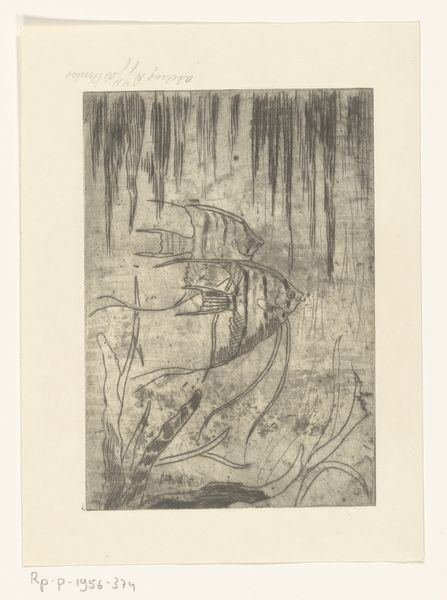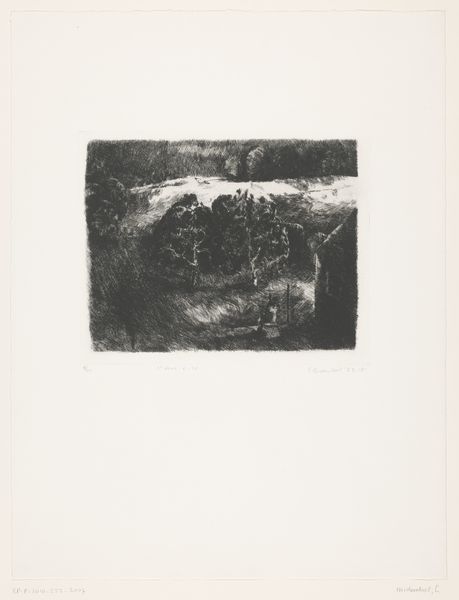
drawing, print, etching
#
drawing
# print
#
etching
#
landscape
#
etching
#
figuration
Dimensions: height 594 mm, width 459 mm, height 749 mm, width 562 mm
Copyright: Rijks Museum: Open Domain
Editor: Here we have "Pijlpaarden + ruiter," or "Arrow Horses + Rider," an etching made by Aat Verhoog in 1967. It's quite striking—the spindly horses on stilts give it an eerie, almost dreamlike quality. What do you make of it? Curator: For me, it is interesting to consider the process of etching itself. The repetitive act of scoring the plate, the physical labor involved...and then you have these regimented vertical lines that dominate the composition, the artist carefully creating a wooden palisade of sorts that entraps the viewer’s eye. Don’t you think there’s a connection here? Editor: That’s interesting. The process informing the meaning? It feels less whimsical now and more…deliberate, perhaps even constrained? Curator: Exactly. Look at the "arrow horses" themselves. Their bodies are solid, grounded, even, while these linear extensions prop them up artificially, dissecting them from the landscape. Is Verhoog commenting on how these magnificent steeds are manufactured? Controlled through their materials? What labor goes into them? How were horses of the time used in the society? Are these noble steeds being elevated… or trapped? Editor: I see what you mean. And that dark, almost suffocating band at the top – that's not just sky, it's also the upper boundary of the plate, literally confining them. I wonder about his choice to focus on horses... Curator: Considering the time, what statement is being made through this deliberate combination of labor, materiality, and representation of animals that often are an instrument for society? This challenges traditional definitions of art and craft in that what would once be a signifier of aristocracy or war, Verhoog questions the role of those horses now through labor, etching as a technique, and medium. Editor: Wow, I hadn’t thought of the medium in that way. It really changes how I see the whole piece. Curator: And that, I believe, is the beauty of engaging with art from a materialist point of view: revealing these layers of social meaning in its creation!
Comments
No comments
Be the first to comment and join the conversation on the ultimate creative platform.

